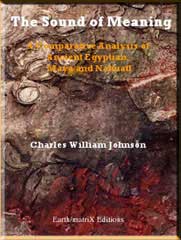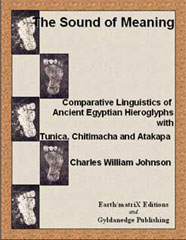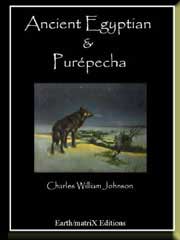|
|
Purchase in Amazon
|
|

PART: IV
THE AZTEC CALENDAR:
THE POINTER
 |
With the pointer designed in this
fashion, it becomes relatively easy to compute the corresponding day glyphs
in some calculations by simply rotating the pointer.
Nonetheless, one wonders whether this might have actually been the case.
For one can proceed without turning the pointer physically, by simply
computing the number of spaces mentally. For example, one may count mentally
by tens or twenties on the day-glyph ring, then simply observe the last
two digits of any sum of days in order to know which day glyph a particular
date might fall on. If the second-to-last digit is an even number, then
simply count off the last number as the day-glyph number 20 in a counterclockwise
fashion; that is, the day 163 would correspond to day-glyph 20 plus 3,
or the day glyph Calli. If the second-to-last number is an odd number,
then count off the last number as of the day glyph number 10 plus the
last digit counter-clockwise; that is, 174 days would correspond to the
day glyph number 10 plus 4, in this case day glyph 14, Ocelotl.
If one has memorized the 20 day glyphs, then by simply analyzing the last
two digits of any number (even into the millions of days), one could immediately
know which day glyph corresponds to that number (or day). In this manner,
one might see how the calendar itself might have functioned as a symbolic
tool for making the calculations mentally, as well as having served as
an obvious record of the method sculpted in stone with specific data.
Consider for example the following: the day 1,768,163 would still fall
on Calli; and the day similar to our previous example, 1,853,174
would still fall on Ocelotl. Simply observe again the last two
digits.
Still, one could envisage having used an actual pointer (either mentally
or physically) in order to achieve numerous calculations almost automatically.
For as soon as one has indicated the day-glyph on the tip of the pointer,
then one can immediately observe the corresponding day glyphs to that
number simultaneously on the remaining positions. Even a seemingly complex
cycle, such as knowing the first and last day glyphs of the five cycles
of 584 days of Venus' rotation would be easily distinguished on the pointer:
 |
Interestingly enough, the pattern revealed by connecting the points of
the first and last days of the five-year cycle shows itself as a pentagon.
The last days of the cycle are 4, 8, 12, 16, and 20; while the series
for the first days are 1, 5, 9, 13, 17.
 |
This case was offered only as a hypothetical way of finding the day glyphs
on the Venus five-year cycle, since for each new year, one would obviously
begin on the day glyph Cipactli as in the 365-day count of Earth.
But, the example was constructed to allow us to see how the 20-day count
becomes extremely flexible in using it for counthing and visualizing its
functions.
| Home | Part: I | Part: II | Part: III | Part: IV | Part: V | Part: VI | Part: VII |
©1995-2011 Copyrighted
by Charles William Johnson. All Rights Reserved
Reproduction prohibited without written consent of the author.
| Home | Books | Author | Site Map |




